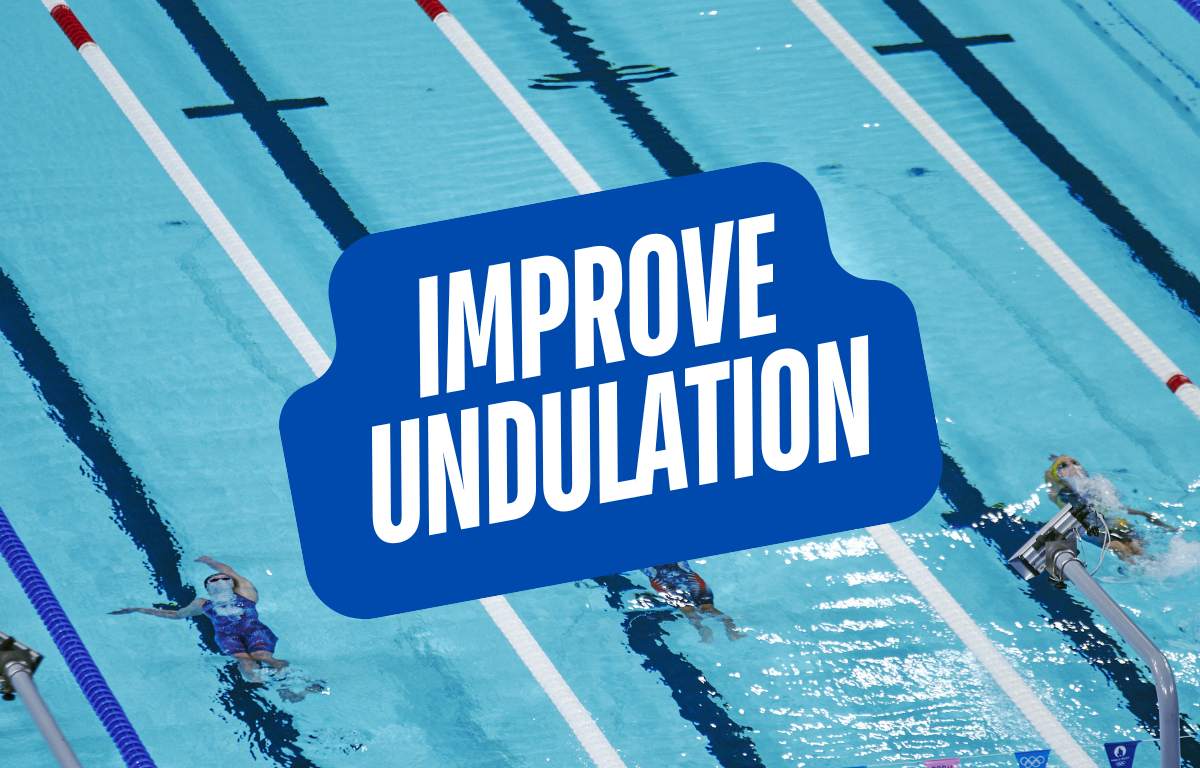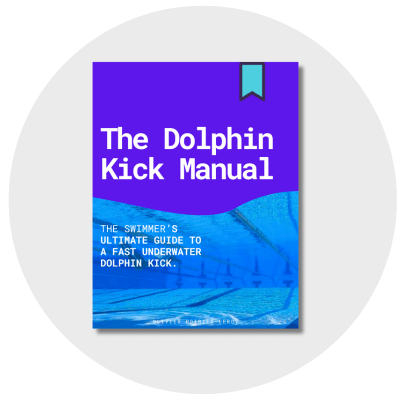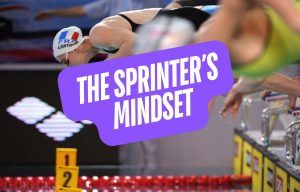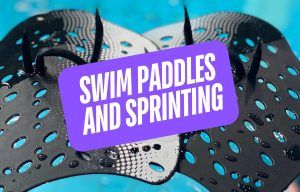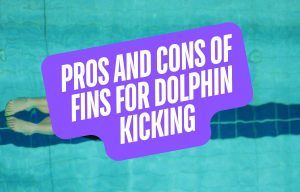Fast dolphin kickers use undulation for speed underwater. Here is how to unlock this fundamental aspect of a PB-busting dolphin kick.
The underwater dolphin kick is a game-changer for swimmers who want to perform like a boss on race day. Short course swimmers, in particular, can benefit greatly from smoother, faster dolphin kicking.
And one of the fundamentals of fast dolphin kicking is undulation. Undulation is the body wave that creates vortices that drive propulsion, reduce drag, increase power, and just generally help you kick like a bullet.
Without undulation, the dolphin kick is flat, clunky, and slow.
Like trying to kick with a touchpad strapped to your back.
For the swimmer struggling to master this essential component of the underwater dolphin kick, here are some tips for better undulation.
Increase thoracic spine mobility
The trunk initiates the undulatory motion. No matter how strong your legs and how flexible the ankles, range of movement in the trunk and thoracic spine acts as the hinge that initiates the body wave.
A stiff, locked-up T-spine limits range of motion and forces the kick to start too low on the body (i.e. kicking from the knees). This kills rhythm and propulsion.
Try these thoracic spine stretches that will give you more undulation when dolphin kicking:
- Cat-Cow stretch. A classic yoga drill that opens the spine and increases spinal awareness.
- Spinal flossing. Gentle flexion-extension movements that loosen up the vertebrae.
Increased thoracic spine mobility lets your undulation flow from the top down, as it should.
Get the sequence right
The underwater dolphin kick can be challenging as there is a lot of coordination and timing required to get it right.
According to a survey of swim coaches based in the UK, ten of whom worked at the international level, the timing and coordination of the UDK was the hardest part to coach with their athletes.
Awesome undulation starts at the core, flows smoothly through the hips, then to the knees and then whips out the ankles and toes.
Mess up that order—bend the knees before flexing the hips, for example—and the chain gets broken and those big, gnarly kicks lose steam.
- Visualize the body wave starting at the trunk and rolling down your body.
- Kick at variable speeds in training to really dial in the order of the sequencing (trunk > hips > knees > ankles).
- Use kick drills like vertical kicking or dolphin kicking with arms at the side to reinforce a smooth, undulatory kick.
Properly sequencing the dolphin kick not only gives you a smooth and “easy” looking kick, but it’s also way more efficient and faster.
Add core training
The more activation you squeeze out of the core when dolphin kicking, the better you undulate and the faster you go.
Think of the core as the throttle of the dolphin kick.
When it’s weak or stuck, the dolphin kick invariably has to start from the knees. An engaged, activated core better controls the “whip” of the kick movement, leading to smoother undulation.
Which means getting after some core training!
- Core stability exercises like Bird Dogs, hollow body holds, and planks help build the pelvic and spinal stability to better control the undulation.
- Core strength/power exercises like pot stirrers, stability ball knee tucks, med ball slams, and explosive leg raises give your undulation more “oomph” when kicking.
Kick on your back
One of the quickest ways to better feel undulation is by kicking on your back with arms at your side.
This setup helps swimmers start the kick from the trunk as limited overhead mobility and stiffness in the trunk/thoracic spine doesn’t get in the way. Kicking on your back also promotes a flick of the toes with the end of each downkick.
Legendary Olympic and NCAA-winning coaches Eddie Reese and Richard Quick love using this type of dolphin kick set to improve both the conditioning and undulation of their athletes.
Vertical kicking
If there is something you want to improve with your dolphin kick, whether it is general conditioning, working the upkick, or in our case today, building a buttery-smooth undulation, vertical kicking is the tool.
By stripping away the limitation of breath control, vertical kicking allows swimmers to isolate the kicking movement and change the stimulus while they are at it, allowing them to better emphasize and fine-tune smooth undulation when kicking.
Float over to water deep enough that your toes and ankles aren’t dragging along the pool bottom and:
- Start with hands sculling lightly in front of you
- Focus on staying vertical. This type of kicking can also shine a light on asymmetrical kick patterns
- Introduce resistance (raising the arms out of the water nicely does the trick)
- And make sure to initiate the kick from the trunk
Wrapping Things Up
Fast underwaters aren’t a fluke or accident. They are built on the foundation of smooth, powerful undulation.
Every other component of a gold-medal winning dolphin kick, from breath control to increased force production to more agile ankles amplify in power once you have this foundation set.
Work the undulation. Reap the benefits of more powerful kicks, better streamlining, stronger vortices, and faster dolphin kick velocity.
The Ultimate Guide for a Faster Underwater Dolphin Kick
Want help leveling up your underwater dolphin kick? The Dolphin Kick Manual is the ultimate resource for helping swimmers and swim coaches develop a world-class underwater dolphin kick.

The Dolphin Kick Manual is a beastly 240+ pages of actionable insights and research into elite dolphin kicking technique and performance. It details everything from mastering undulation to vortex recapturing to structuring a dryland program for dolphin kicking success.
It combines evidence-based insights with a collection of 20 ready-to-go sets and a 6-week Action Plan to help swimmers set a course for dolphin kicking success.
Train smarter and kick faster.

